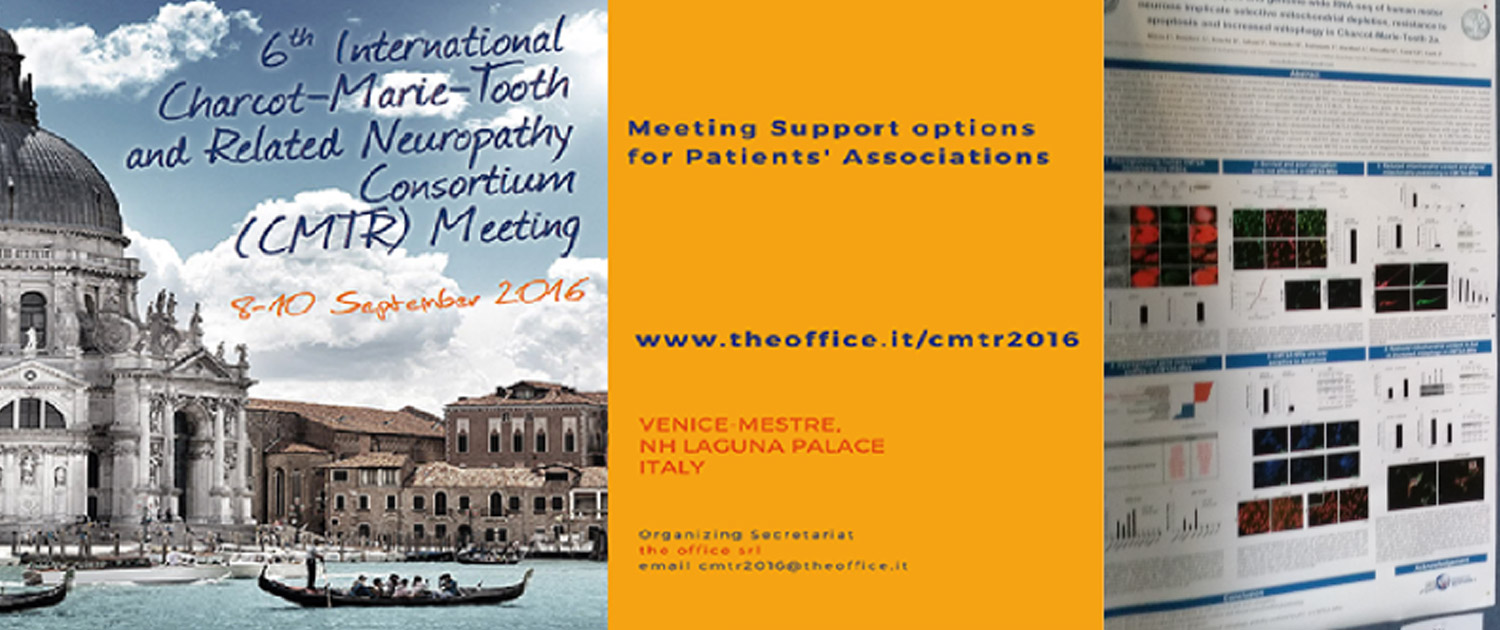The contribution of our researchers to CMTR Consortium
13 October 2016
We publish an abstract of the study presented at the CMTR Consortium by our researchers Dr Federica Rizzo and Dr Agnese Ramirez from Dino Ferrari Center:
FUNCTIONAL ANALYSIS AND GENOME-WIDE RNA-SEQ OF HUMAN MOTOR NEURONS IMPLICATE SELECTIVE MITOCHONDRIAL DEPLETION, RESISTANCE TO APOPTOSIS AND INCREASED MITOPHAGY IN CHARCOT-MARIE-TOOTH 2A
Rizzo F, Ramirez A., Ronchi R., Salani S, Nizzardo M, Fortunato F, Bordoni A, Bresolin N, Comi GP, Corti S.
Dino Ferrari Centre, Neuroscience Section, Department of Pathophysiology and Transplantation(DEPT), Univerity of Milan, Neurology Unit, IRCCS Fondation Cà Granda Ospedale Maggiore Policlinico, Milan, Italy
The disease type 2A Charcot-Marie-Tooth (CMT2A) is a sensorimotor polyneuropathy, characterized by the death of motor neurons and sensory, which results in progressive limb weakness, muscle atrophy and loss of sensory. The disease is due to mutations in the gene Mitofusina2 (MFN2), which encodes a protein localized at the mitochondria, organelles very important for the survival of the cells and their proper functioning. To date, unfortunately, there are no conclusive therapies for this condition.
The reprogramming of these mature cells in induced pluripotent stem cells (iPSC) offers the possibility of obtaining patient-specific cells, such as human motor neurons and sensory neurons, typically affected in the disease, but impossible to obtain directly from patients with other strategies. In the study published online August 9, 2016, on Human Molecular Genetics, the research team of the Centro Dino Ferrari, University of Milan, Fondazione IRCCS Ca ‘Granda Ospedale Maggiore Policlinico , differentiated motor neurons (MN) from iPSCs derived from biopsy skin of patients with CMT2A. In this way, we have generated an in vitro model of the disease, currently not available. The cells thus obtained showed some typical aspects of the disease, such as reducing the amount of mitochondria and changes in their location, with no significant differences in survival. These defects are most apparent in neuronal cells results compared to skin fibroblasts, in agreement with the neuronal specificity of the disease. Overall, these data suggest that the reduction of mitochondria in motor neurons that express the mutated form of MFN2 , is not the result of a reduced production of mitochondria, but more likely the result of the death of these organelles. These mechanisms represent possible new molecular therapeutic targets for the development of an effective treatment for this disease.




